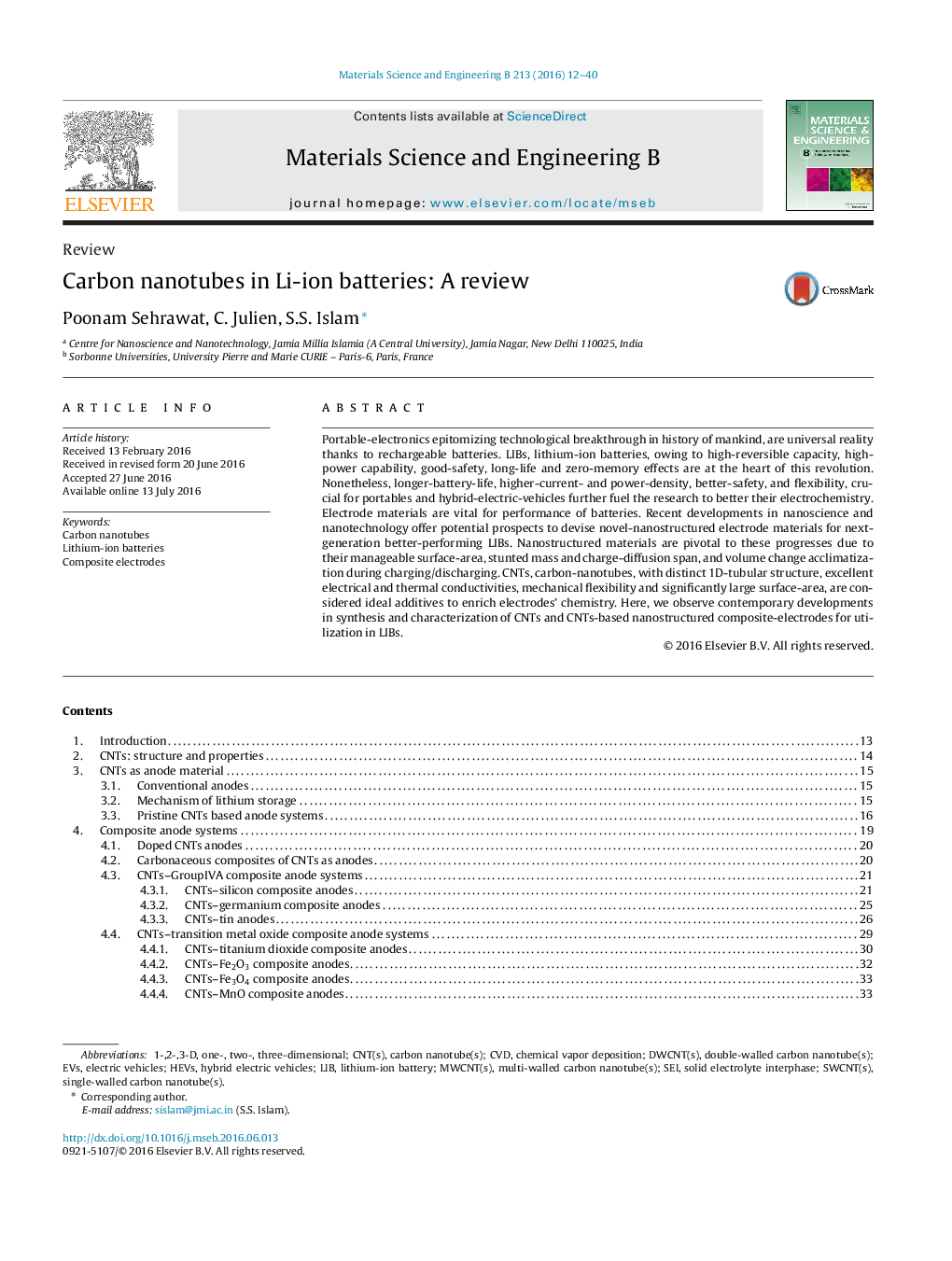| Article ID | Journal | Published Year | Pages | File Type |
|---|---|---|---|---|
| 5448776 | Materials Science and Engineering: B | 2016 | 29 Pages |
Abstract
Portable-electronics epitomizing technological breakthrough in history of mankind, are universal reality thanks to rechargeable batteries. LIBs, lithium-ion batteries, owing to high-reversible capacity, high-power capability, good-safety, long-life and zero-memory effects are at the heart of this revolution. Nonetheless, longer-battery-life, higher-current- and power-density, better-safety, and flexibility, crucial for portables and hybrid-electric-vehicles further fuel the research to better their electrochemistry. Electrode materials are vital for performance of batteries. Recent developments in nanoscience and nanotechnology offer potential prospects to devise novel-nanostructured electrode materials for next-generation better-performing LIBs. Nanostructured materials are pivotal to these progresses due to their manageable surface-area, stunted mass and charge-diffusion span, and volume change acclimatization during charging/discharging. CNTs, carbon-nanotubes, with distinct 1D-tubular structure, excellent electrical and thermal conductivities, mechanical flexibility and significantly large surface-area, are considered ideal additives to enrich electrodes' chemistry. Here, we observe contemporary developments in synthesis and characterization of CNTs and CNTs-based nanostructured composite-electrodes for utilization in LIBs.
Keywords
Related Topics
Physical Sciences and Engineering
Materials Science
Electronic, Optical and Magnetic Materials
Authors
Poonam Sehrawat, C. Julien, S.S. Islam,
